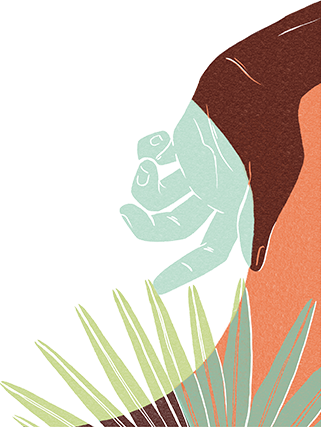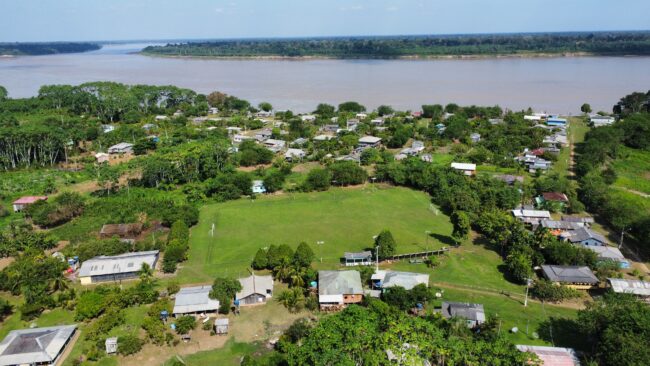 10.06.2025
10.06.2025
Environmental Justice in the Madeira River Basin: The Challenge of Permanence
Communities Affected by Dams Organize to Confront Violations and Build Sustainable Alternatives in the Amazon
The Madeira River has flowed for centuries, shaping the landscape and the lives of the people along its course. It pulses with life, nourishes communities, and holds stories and dreams. But this flow has been disrupted by large-scale infrastructure projects that have drastically altered its dynamics. Still, where there is resistance, there is hope.
The construction of dams such as Santo Antônio and Jirau in the state of Rondônia during the 2000s changed the river’s natural rhythm. Entire areas were flooded, traditional riverine communities were forcibly displaced, species disappeared, and waterborne diseases increased due to the stagnant waters. A territory once defined by abundance and autonomy began to face scarcity, insecurity, and dependency.
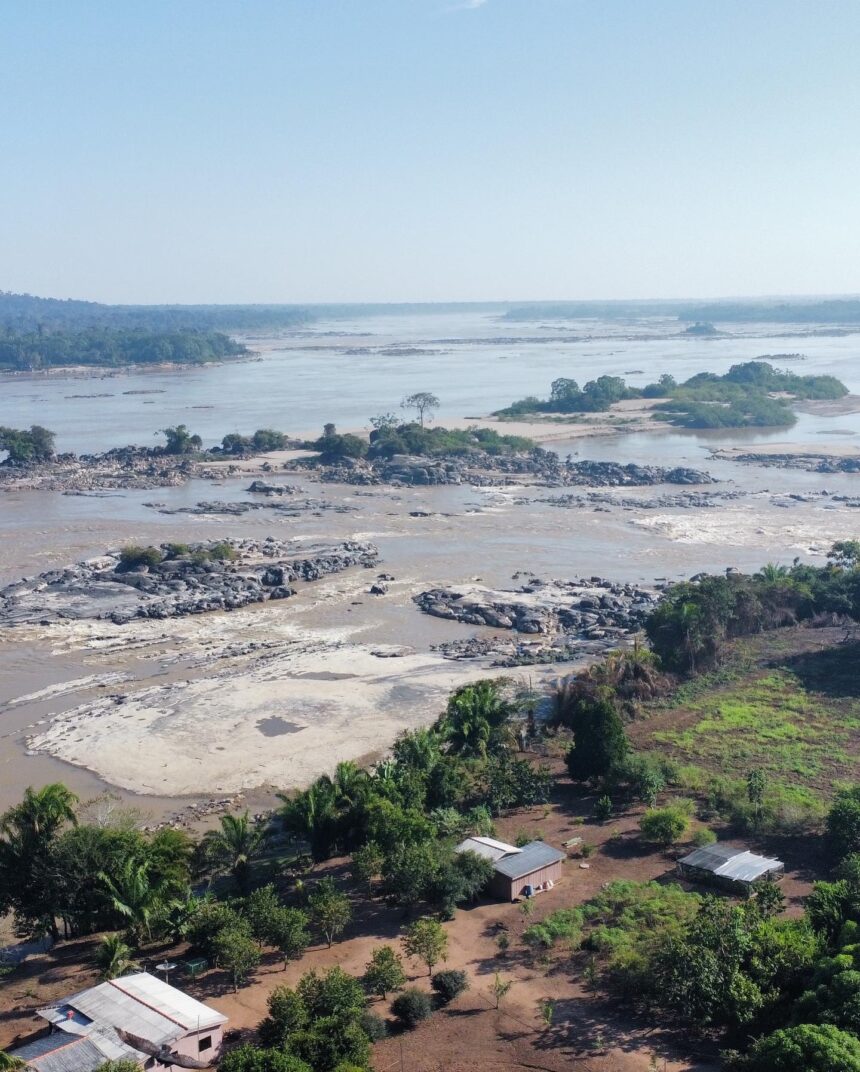
In response to this scenario, resistance emerged and gained strength. Socio-environmental movements such as the Instituto Madeira Vivo (IMV) have been working for nearly 20 years to confront the impacts, defend rights, and build sustainable alternatives alongside the populations of the Madeira River basin.
Amid this resistance, voices have risen that refuse to be silenced. One of them is that of environmentalist and historian Iremar Antônio Ferreira, founder and director of Instituto Madeira Vivo (IMV) and a member of the Board of Trustees of the Casa Socio-Environmental Fund. Iremar has dedicated his life to defending socio-environmental rights in the Amazon, particularly in the Madeira River basin. Active since the 1980s alongside traditional peoples, he is now a key figure in cross-border advocacy for environmental justice.
With the support of the Casa Socio-Environmental Fund and other philanthropic initiatives focused on socio-environmental issues, the movements defending the Madeira River have been strengthening their capacity for organization, mobilization, and advocacy. From the beginning, we have stood with these struggles, supporting what keeps resistance alive: logistics, food, storytelling, training, technical and legal assistance.
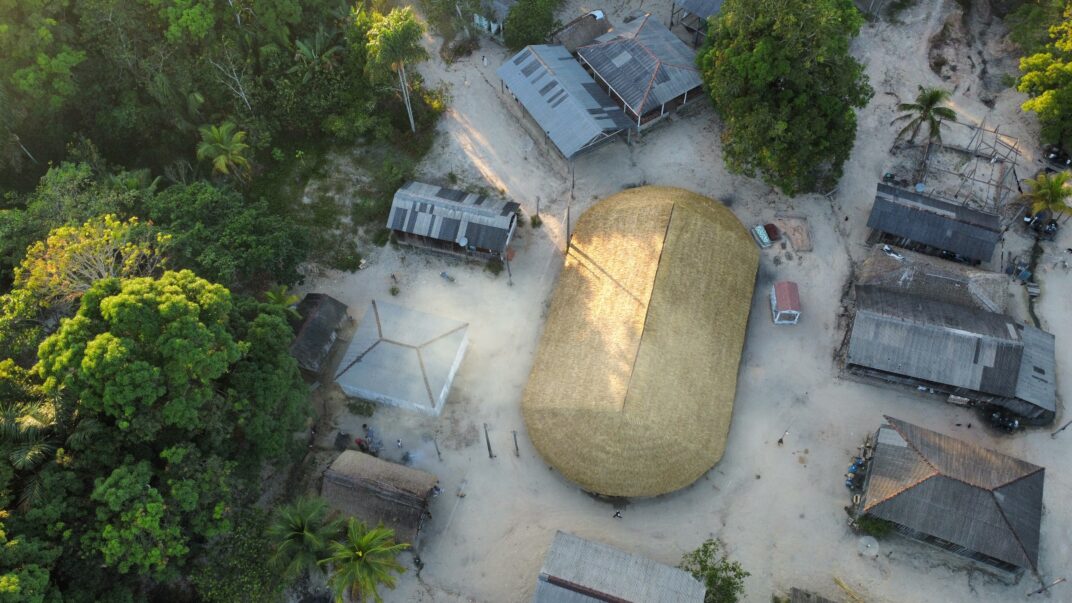
More than resisting, these collectives are building permanence: they safeguard memory, dignity, and rights. The support sustains bodies, ideas, and alliances. It enables local voices to reach national and international forums, empowers community practices, and helps turn sustainable alternatives—such as solar energy—into reality.
Projects supported by the Casa Socio-Environmental Fund, such as “Strengthening the Pan-Amazonian Rivers Alliance” and “Building Resistance in the Pan-Amazon”, show possible paths forward and connect Brazil, Bolivia, and Peru through shared knowledge. The memory of the 2014 flood, which affected more than 30,000 families, remains alive in the fight for reparations. By denouncing the past, communities are also shaping the future.
In this interview, Iremar Antônio Ferreira, founder of the Instituto Madeira Vivo (IMV), shares his journey and reflections on the impacts of hydropower plants and the importance of alliances between communities and philanthropic organizations in the defense of the river and its territories.
==========
Interview

Iremar Antônio Ferreira is one of the most active voices in the defense of socio-environmental rights in the Amazon. Founder of the Madeira Vivo Institute, he has spent decades working alongside traditional communities, denouncing injustices and strengthening community-based solutions for local territories.
1. The Madeira Vivo Institute emerged in a context of severe environmental and social impacts in the region. How have you seen these challenges evolve over the years?
Iremar: The Madeira Vivo Institute was founded in 2006 as an administrative and financial support tool for the grassroots campaign *Viva o Rio Madeira Vivo*, which opposed the initial studies and later the licensing of the Madeira River Hydropower Complex. The institute was created to support this campaign, which brought together various civil society organizations, including Indigenous movements, the Movement of People Affected by Dams (MAB), the Pastoral Land Commission (CPT), and the Indigenous Missionary Council (CIMI), among others.
At the time, the implementation of the Initiative for the Integration of Regional Infrastructure in South America (IIRSA) was advancing through the Amazonian corridor in the Madeira River Basin, as part of the government’s plan to build the hydropower complex. The original project envisioned three large dams and a waterway, but it was fragmented and began with the Santo Antônio and Jirau plants.
This period was also marked by a rapid advance in deforestation in Rondônia, driven by agribusiness—especially cattle ranching. Settlements were being swallowed by the expansion of pastureland, and protected territories were being invaded, such as the Jaci-Paraná Extractive Reserve and areas south of the Karipuna Indigenous Territory. Moreover, on the border with Amazonas and Acre, there was an intense rush for timber, as reserves in the rest of the state had already been depleted.
Today, this situation has not changed significantly. The hydropower complex is still on the table, with proposals to build two more large dams—Ribeirão and Yata II—both in areas bordering Bolivia. Furthermore, Porto Velho, which at the start of the hydropower project was not a major agricultural hub, has become the leading municipality for soybean expansion in Rondônia since 2023. This further fuels the push for the waterway infrastructure, both on the Brazilian and Bolivian sides. These are just a few examples of how this development model has evolved—continuing to drive deep socio-environmental impacts in the region.
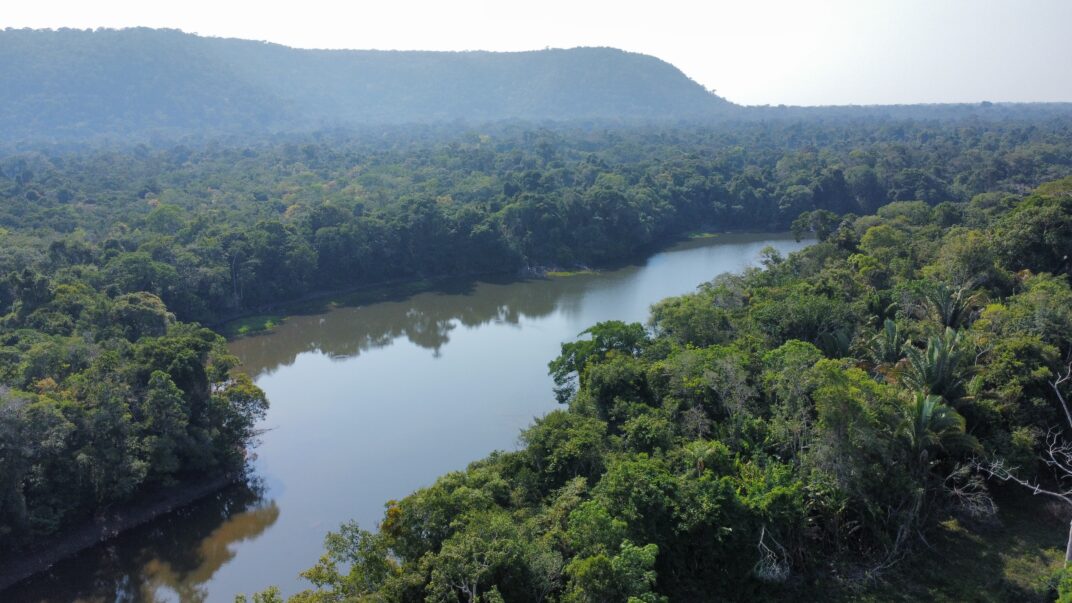
2. The riverside and Indigenous communities of the Madeira River play a key role in defending their territories. How are these populations involved in the movement’s actions?
Iremar: The Madeira Vivo Institute was created as a support tool for organizations and social movements leading the campaign. After the most intense period of resistance to the environmental assessment and public hearings, the Institute continued to be a reference point on the impacts of hydropower, along with the Movement of People Affected by Dams (MAB).
In this context, we began organizing riverside and Indigenous communities, especially in border regions like Guajará-Mirim. At first, this mobilization involved not only regional Indigenous organizations, but also the Coordination of Indigenous Organizations of the Brazilian Amazon (COIAB), which joined the resistance by considering the downstream impacts. It was essential to maintain this articulation to ensure the issue remained on the agenda. We also facilitated exchanges with other river basins in the Amazon, strengthening the sharing of experiences and resistance strategies.
In 2009, we helped establish the Alliance of the Four Rivers—Madeira, Teles Pires, Tapajós, and Xingu—with the aim of broadening the resistance. Later, the Juruena River joined as well. This coalition allowed us to exert pressure in Brasília, and we were able to take this issue to the Presidential Chief of Staff’s office on several occasions, along with other Amazonian leaders. We fought to halt projects such as Belo Monte and the Tapajós Hydropower Complex.
We haven’t limited ourselves to our own territory. In 2012, we brought this debate to Rio+20, presenting a model of autonomous management together with other movements. This work led to the creation of the Pan-Amazon Rivers Alliance, expanding the struggle beyond national borders and strengthening ties with other Amazonian countries.
Today, in the Madeira River Basin, we continue to coordinate efforts through COMVIDA—the Committee for the Defense of Amazonian Life in the Madeira Basin. This committee brings together several organizations and social movements and has become a key tool to strengthen both political and territorial advocacy.
3. Securing support for socio-environmental struggles is not always easy. What have been the greatest challenges in securing resources and strengthening community resistance along the Madeira River? And how has the support from organizations like the Casa Socio-Environmental Fund contributed to this work?
Iremar: The Madeira Vivo Institute was born with the support of the Casa Fund, between 2006 and 2007—specifically in 2006, when we formally established the organization. From the very beginning, we faced the challenge of fostering a collective understanding of what it means to be a social movement, to engage in resistance, and to mobilize people. But we found in Casa Fund a steady partner that didn’t let us drop the ball.
From there, we were able to strengthen local collectives. For example, in Jaci-Paraná, Rondônia, we worked with a group of fishers to develop a project through Petrobras’ Citizenship Development Fund, focused on fish farming using floating cages. This project, carried out between 2008 and 2009, was later threatened by the hydropower plants and ultimately destroyed in 2011 by the formation of the Santo Antônio reservoir.
We’ve always prioritized strengthening territorial organizations. The Madeira Vivo Institute includes teachers, Indigenous leaders, fishers, students, and people from various knowledge areas—all of whom belong to the territory. This diversity allowed us to support different initiatives under the legal umbrella of the Institute.
Accessing financial resources has always been a challenge. As a small organization with limited financial and managerial capacity, we’ve turned to small funds for support. We believe it’s necessary to start small in order to build volume, strength, and mobilization. That’s how we continue to move forward today.
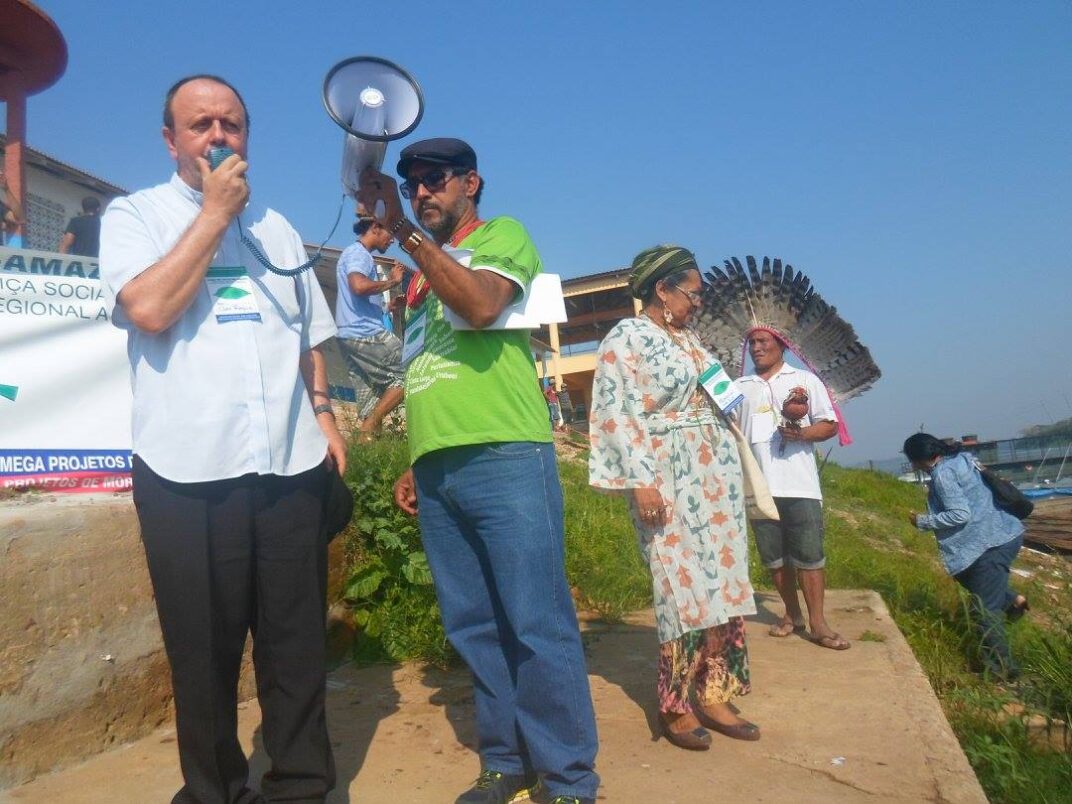
4. Socio-environmental movements often face pressure and threats. How does Madeira Vivo handle these challenges and stay organized to keep fighting? And over the years, what have been the movement’s most significant achievements?
Iremar: In terms of pressure and threats, we felt them strongly during the resistance against the hydroelectric dams. I, personally—and not only me, but also colleagues from MAB—received restraining orders that prohibited us from accessing areas of interest to the dam projects during community awareness efforts. The threat of being arrested at any time if we entered those territories was real. That pressure restricted our actions, but it didn’t push us out of the territory.
On the contrary, we kept finding ways to exert pressure and expose the companies publicly. They spoke a lot about transparency and doing things differently in the Madeira region, but they acted just like in other regions, using intimidation to silence leaders. We responded to these threats by being transparent and making everything public, which helped avoid retaliation.
Thanks to that persistence, the restraining order against me was eventually lifted—two years later, in fact. From 2008 to 2010, I lived under that order, but after that, I didn’t face direct pressure anymore. Still, we didn’t manage to move forward with negotiations around community rights. There was a lot of talk about solutions, but very little action—a tactic used to delay and weaken our resistance.
A major achievement for us was the creation of the Collective Organization of Fishers of Jaci-Paraná. It gave political strength to the resistance but also triggered a wave of threats against local leaders. Some people were even killed—not directly because of our actions, but in the context of land conflicts with land grabbers. It led to very delicate situations, and even though we tried to work with the justice system to help, we saw little progress in protecting the fishers. One of the region’s leaders had to go into exile because of the threats.
We can’t forget that. Before that collective organization of fishers, there was no structured resistance. With it, we managed to secure a project for raising fish in floating cages on Lake Madalena in Jaci. That was a significant win in the face of so many difficulties.
On the other hand, a big loss was the destruction of that same project due to the creation of the Santo Antônio reservoir at the end of 2011. We filed a lawsuit against Santo Antônio Energia to defend the rights of the Jaci fishers’ collective. Unfortunately, in early 2024, the Supreme Court ruled against us.
Despite this, the organizing process allowed us to forge a new path starting in 2016, along the Bolivian border. That led to the creation of the Committee for the Defense of Amazonian Life in the Madeira River Basin, which has sparked popular mobilization and already achieved significant victories. One of them was the amendment of the municipal organic law to include the rights of nature, and the proposal of a bill that recognizes the Laje River as a rights-bearing entity—the first river in Brazil to achieve that legal status.
This organizing work also produced three community consultation protocols, which were approved and are now being used by the Public Prosecutor’s Office—with support from the Casa Fund—during the pandemic. We also presented a bill in the Guajará-Mirim City Council to ban aerial spraying of pesticides in the municipality. The goal is to protect water sources, Indigenous populations, small-scale farmers, and the environment, as agribusiness has heavily polluted the region.
Another important achievement was supporting the Karipuna people’s resistance to protect their territory, through collaboration between the Casa Fund and the Madeira Vivo Institute.
We’ve also invested in youth empowerment, a key priority we started with the Casa Fund’s support. We created a group of young edu-communicators—Indigenous youth, activists, small farmers, riverine and urban youth. This has been crucial to ensure the new generation plays a meaningful role in communicating for the well-being of their communities.
5. Considering the future challenges, what are the main strategies for Madeira Vivo in the coming years? Are there ongoing initiatives that deserve special attention? And how do you see the engagement of younger generations in this fight?
Iremar: The Madeira Vivo Institute turned 18 in 2024—we’ve come of age, officially. One of our greatest challenges is managing so much demand. Many grassroots organizations don’t have the resources to establish or maintain their legal status, so we’ve learned to provide that legal and administrative support. But the demand keeps growing, and we don’t always have the resources to maintain an administrative team, which ends up putting extra pressure on me to coordinate and also fundraise for daily operations.
Our goal is to build a strong administrative team that can better support grassroots initiatives. We want to serve as an umbrella organization for these territorial efforts. Back in the 1990s, Rondônia’s Agroforestry Development Plan (PlanaFloro) encouraged the creation of many organizations to receive funding—but many of them didn’t last due to legal issues.
That’s why we don’t want to promote that same model. For over five years, we’ve taken on the role of intermediating not just local projects but also initiatives from other parts of Brazil—like resistance to nuclear energy in Rio de Janeiro, campaigns in Bahia, and advocacy for a new national environmental policy. Our goal is to amplify these important efforts, without requiring each one to become a formal legal entity.
A major challenge for us is strengthening our internal team to better respond to this rising demand. We don’t fundraise for ourselves—we raise funds for goals, projects, and territorial priorities. That’s what sets us apart: we don’t spend money on consultants. We have a clear mission and operate based on what communities and grassroots collectives need. I wouldn’t describe us as a professional NGO, but rather a social movement with legal status that uses it to amplify its impact.
Looking ahead, we’re also investing in youth leadership development—both in communication and administrative training. The idea is to bring together young leaders alongside elders to ensure the new cycle continues the legacy of grassroots organizing, rather than turning into a scramble for NGO funding. We believe strong grassroots organizations build collective power—without sacrificing their identity—by handling resources in a more organized and strategic way.
Another area we’re focusing on is agroecology—a way of life that restores degraded lands in Indigenous and forest-dwelling communities. That includes forest recovery, especially with Brazil nut trees, and the use of solar energy to meet basic needs like water access.
We’re trying to align our way of living and working more closely with agroecological principles and the worldview of Indigenous peoples, which centers on harmony with nature. That concept—what some call “buen vivir” or good living—is central to what we want to pass on to younger generations: a collective life project, not an individual one based solely on income or professionalism.
================
Iremar Antônio Ferreira, a board member of the Casa Socio-Environmental Fund, has dedicated his life to the fight for socio-environmental rights in the Amazon. Founder and director of the Madeira Vivo Institute (IMV), he has been working since the 1990s alongside Indigenous peoples, riverine communities, and forest dwellers to defend their territories and resist the impacts of hydroelectric dams on the Madeira River. An active member of networks such as FOSPA, FMCJS, and COMVIDA, Iremar mobilizes community-based solutions grounded in ethnodevelopment and is one of the leading voices for socio-environmental justice across the Pan-Amazon.
Photos: Iremar Antônio Ferreira
